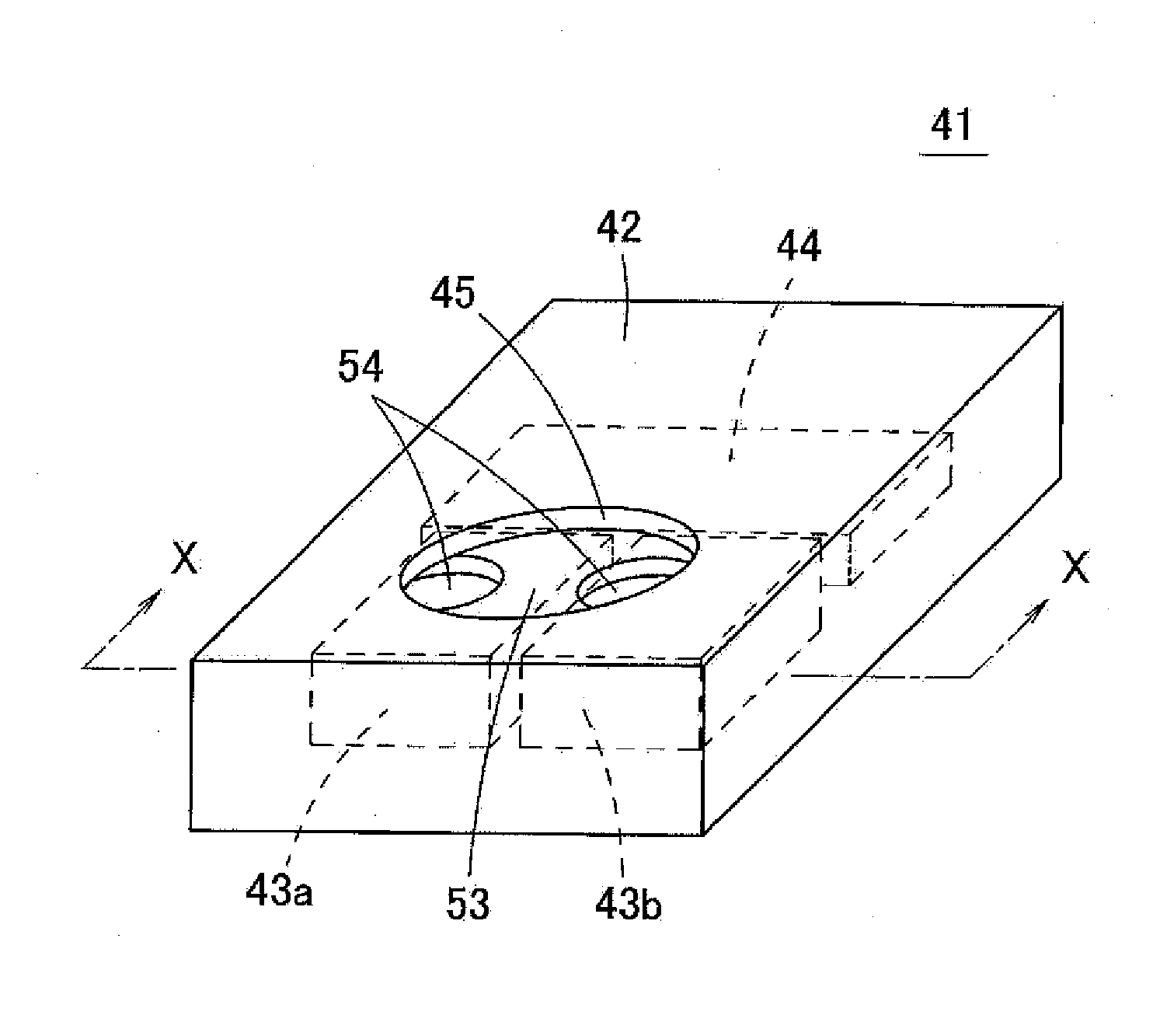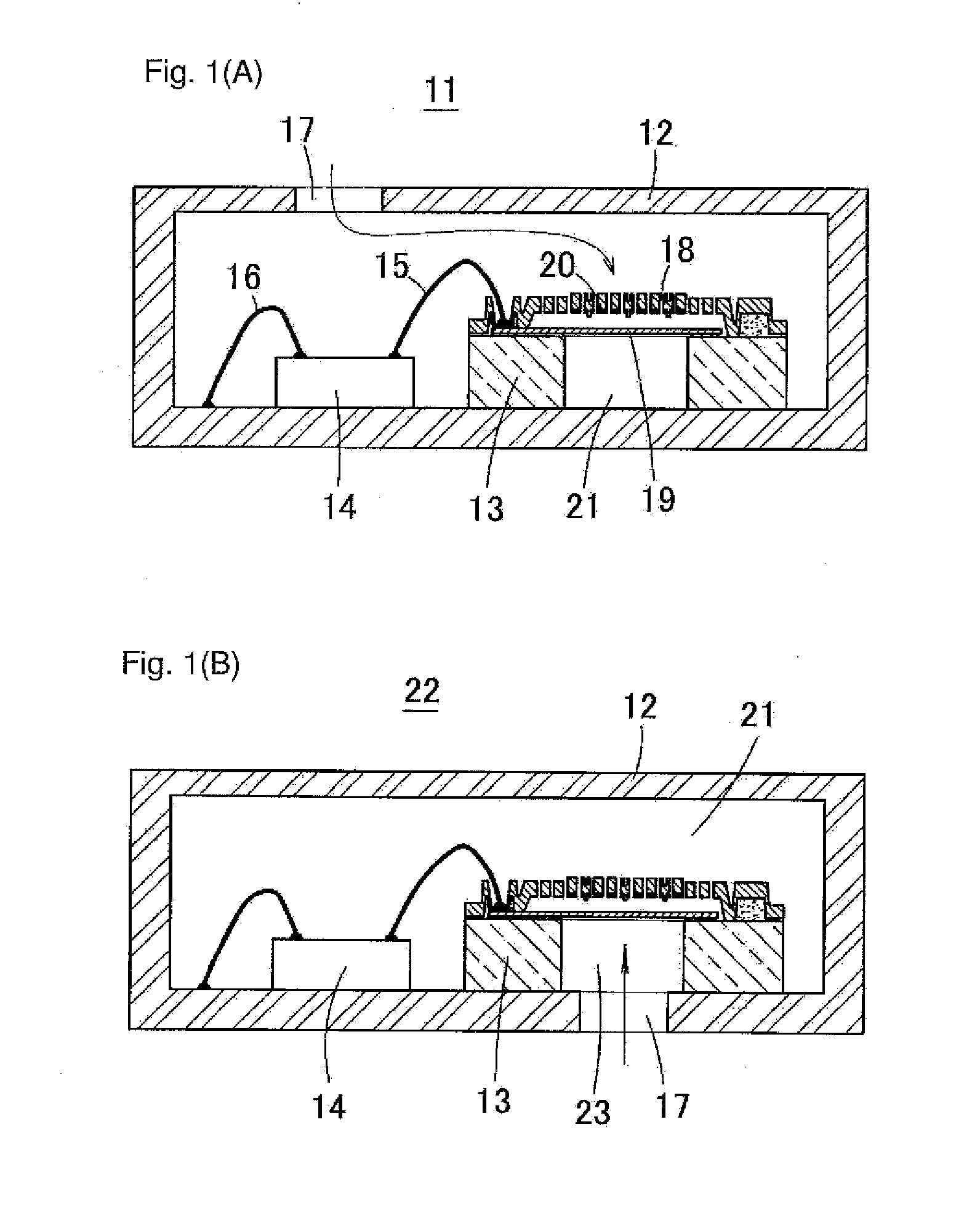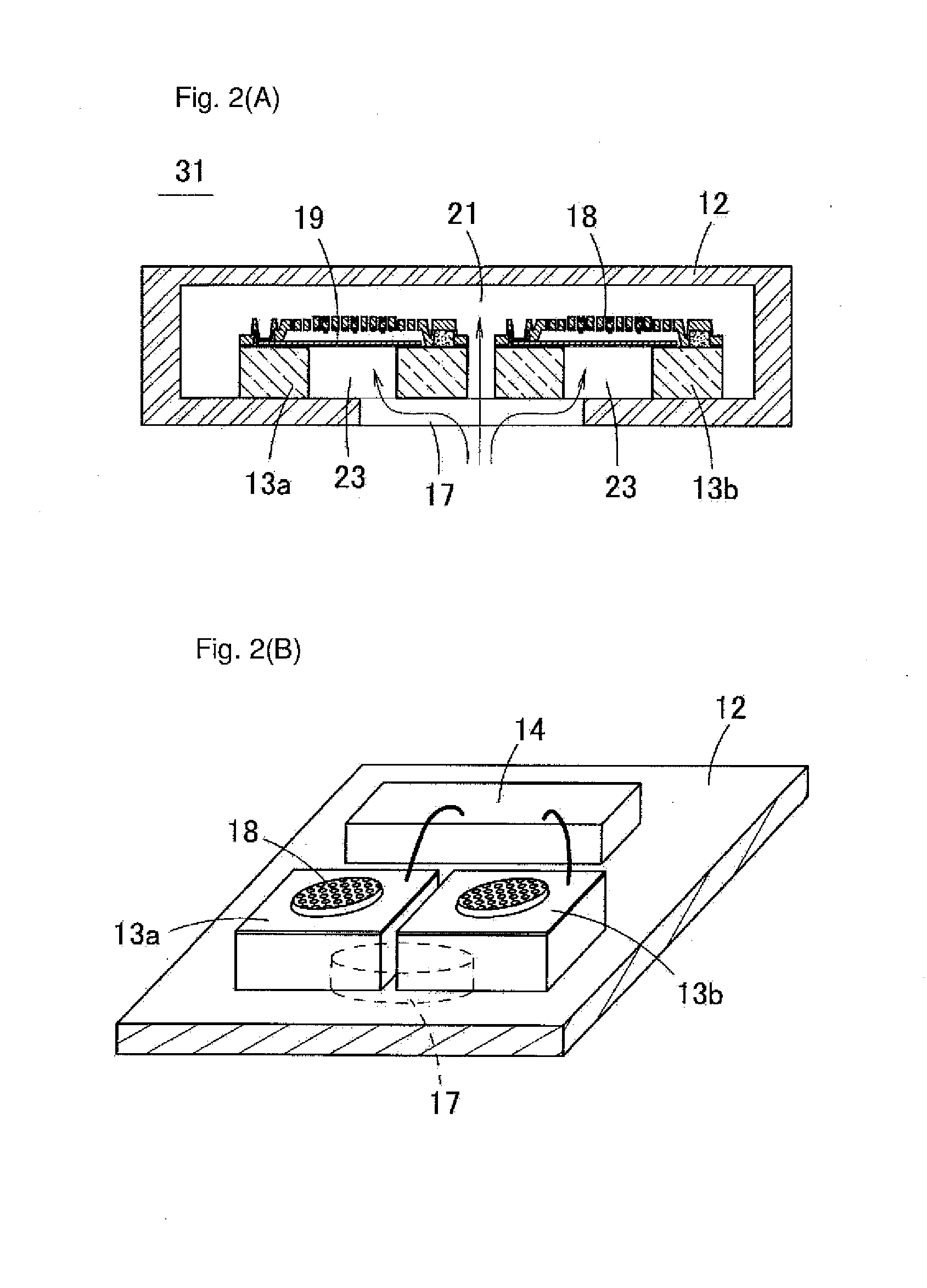Sensor device
- Summary
- Abstract
- Description
- Claims
- Application Information
AI Technical Summary
Benefits of technology
Problems solved by technology
Method used
Image
Examples
first embodiment
[0047]A microphone of the first embodiment of the present invention will be described below with reference to FIGS. 4 to 6. FIG. 4 is a perspective view illustrating a microphone 41 of the first embodiment of the present invention when seen from a lower surface side. FIG. 5A is an X-X line cross-sectional view in FIG. 4, and FIG. 5B is a perspective view illustrating an inside of a package of the microphone 41. FIG. 6 is a perspective view illustrating a sound hole 45 of a package 42 and an interposer 53 (support base).
[0048]As illustrated in FIGS. 5A and 5B, in the microphone 41, two acoustic sensors 43a and 43b and a processing circuit 44 such as an ASIC are accommodated in the package 42, and the acoustic sensors 43a and 43b and the processing circuit 44 are connected by bonding wires. The flat interposer 53 is fixed to a bottom surface of the package 42, and the acoustic sensors 43a and 43b are fixed to the upper surface of the interposer 53 and close to each other without conta...
modified example 1
[0065]FIG. 7 is a cross-sectional view illustrating a microphone of a modified example of the first embodiment of the present invention. In this modified example, an opening area of a sound hole 45 is made larger. Particularly, the opening area of the sound hole 45 is made larger such that penetration holes 54 and 54 of the interposer 53 are both accommodated in the sound hole 45 when seen from a direction vertical to an upper surface of an interposer 53.
[0066]In a microphone 41 of the first embodiment, the strength of a package 42 is enhanced by adhering the interposer 53 to the bottom surface of the package 42, so that it is possible to keep the strength of the package 42 even when the opening area of the sound hole 45 is made larger. Further, the interposer 53 is interposed between acoustic sensors 43a and 43b and the package 42, so that it is possible to independently determine the size of each of the acoustic sensors 43a and 43b and the opening area of the sound hole 45. Conseq...
modified example 2
[0067]Three or more acoustic sensors may be built in a microphone. FIG. 8A is a perspective view illustrating an inside of a package of a microphone of a modified example of the first embodiment of the present invention. FIG. 8B is a perspective view illustrating a sound hole of the package and an interposer in the microphone in FIG. 8A.
[0068]According to this modified example, four acoustic sensors 43a, 43b, 43c and 43d are built in a package 42. In an interposer 53, four penetration holes 54 are opened to meet positions of cavities (front chambers 52) of the acoustic sensors 43a to 43d. Further, a sound hole 45 is opened in the bottom surface of the package 42 such that at least part of the four penetration holes 54 overlap when seen from a direction vertical to the upper surface of the interposer 53.
[0069]Even when three or more acoustic sensors are built in, it is possible to possible to provide the same function and operation as those of the microphone 41 by making the other co...
PUM
 Login to View More
Login to View More Abstract
Description
Claims
Application Information
 Login to View More
Login to View More - R&D
- Intellectual Property
- Life Sciences
- Materials
- Tech Scout
- Unparalleled Data Quality
- Higher Quality Content
- 60% Fewer Hallucinations
Browse by: Latest US Patents, China's latest patents, Technical Efficacy Thesaurus, Application Domain, Technology Topic, Popular Technical Reports.
© 2025 PatSnap. All rights reserved.Legal|Privacy policy|Modern Slavery Act Transparency Statement|Sitemap|About US| Contact US: help@patsnap.com



